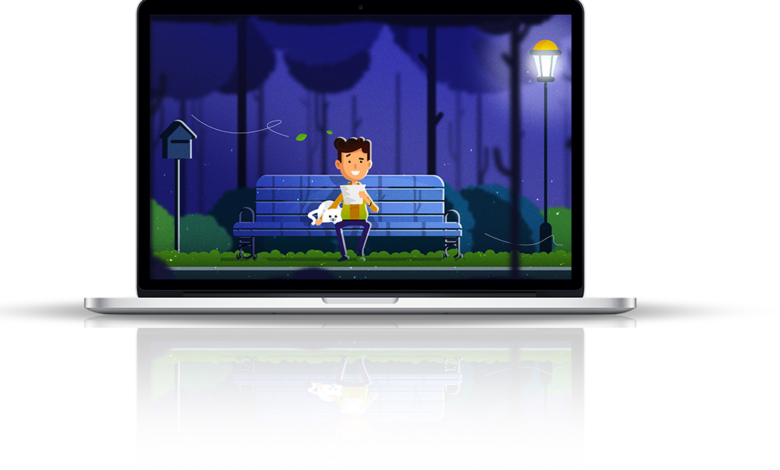
Introduction: In the bustling realm of digital creativity, where imagination knows no bounds and technology is the catalyst for limitless innovation, 3D animation and design stand as towering pillars of artistic expression. The ability to breathe life into static images, sculpt breathtaking landscapes, and craft immersive worlds has transformed storytelling across industries, from film and advertising to gaming and architecture. At the heart of this dynamic landscape lies a thriving community of freelance 3D animators and designers, individuals who have dared to pursue their passion for creativity on their terms, embracing the freedom and autonomy that comes with freelancing.
Chapter 1: The Rise of Freelance 3D Animation and Design The evolution of technology, coupled with the democratization of creative tools, has democratized the field of animation and design, paving the way for freelancers to thrive in a competitive marketplace. With the advent of powerful software such as Autodesk Maya, Blender, and Cinema 4D, individuals no longer need access to expensive studio equipment to bring their visions to life. Instead, freelancers can harness the power of their personal computers and a wealth of online resources to create stunning visual masterpieces from the comfort of their homes.
Furthermore, the shift towards remote work and the rise of digital platforms and marketplaces have expanded the reach of freelance 3D animators and designers, connecting them with clients from around the globe. Websites like Upwork, Freelancer, and Fiverr serve as virtual hubs where freelancers can showcase their portfolios, bid on projects, and build lasting relationships with clients across industries. This accessibility has democratized the playing field, enabling freelancers to compete with established studios and secure lucrative projects that align with their creative vision.
Chapter 2: Navigating the Freelance Landscape While the allure of freelancing in 3D animation and design is undeniable, navigating the freelance landscape requires a unique blend of artistic talent, technical proficiency, and entrepreneurial spirit. Unlike traditional employment models, where stability and structure are often prioritized, freelancers must embrace uncertainty and adaptability as they chart their own course in the digital realm.
One of the biggest challenges facing freelance 3D animators and designers is the need to balance creative freedom with financial stability. While freelancing offers unparalleled autonomy and flexibility, it also requires self-discipline, time management, and financial savvy to ensure a steady flow of income. Freelancers must wear many hats, from artist and project manager to marketer and accountant, juggling multiple responsibilities while staying true to their artistic vision.
Moreover, freelancers must navigate the intricacies of client relationships, from negotiating contracts and setting expectations to managing feedback and revisions. Clear and transparent communication is essential for fostering trust and collaboration, ensuring that both parties are aligned on project goals and timelines. By cultivating strong relationships with clients and delivering exceptional work, freelancers can build a reputation for reliability and excellence, paving the way for repeat business and referrals.
Chapter 3: Mastering the Craft At the heart of freelance 3D animation and design lies a dedication to mastery – a relentless pursuit of excellence fueled by curiosity, passion, and a thirst for innovation. Freelancers must stay abreast of the latest trends, techniques, and software updates, continuously honing their skills to stay competitive in a rapidly evolving industry.
Continuous learning is essential for freelancers looking to stay ahead of the curve, whether through online courses, tutorials, workshops, or networking events. Platforms like Udemy, Skillshare, and LinkedIn Learning offer a wealth of resources for freelancers to expand their skill set, from mastering new software tools to exploring emerging technologies like virtual reality and augmented reality.
Furthermore, freelancers must cultivate a diverse portfolio that showcases their versatility and creativity across different styles and genres. A well-curated portfolio not only demonstrates technical proficiency but also tells a compelling story about the freelancer’s unique artistic voice and vision. By showcasing their best work and highlighting their expertise, freelancers can attract clients who resonate with their style and aesthetic.
Chapter 4: Overcoming Challenges and Embracing Opportunities Despite the rewards of freelancing in 3D animation and design, the journey is not without its challenges. From the uncertainty of project availability to the isolation of working alone, freelancers must navigate obstacles with resilience, adaptability, and a growth mindset.
One of the biggest challenges facing freelance 3D animators and designers is the feast or famine nature of the industry, where periods of high demand may be followed by droughts of work. Freelancers must learn to budget and plan for lean times, diversifying their income streams and cultivating long-term client relationships to weather the ups and downs of freelancing.
Moreover, freelancers must grapple with the pressure to constantly innovate and push the boundaries of their creativity, while also balancing the demands of client projects and deadlines. Burnout is a real risk in a field where passion and perfectionism often collide, and freelancers must prioritize self-care and boundaries to avoid exhaustion and creative stagnation.

